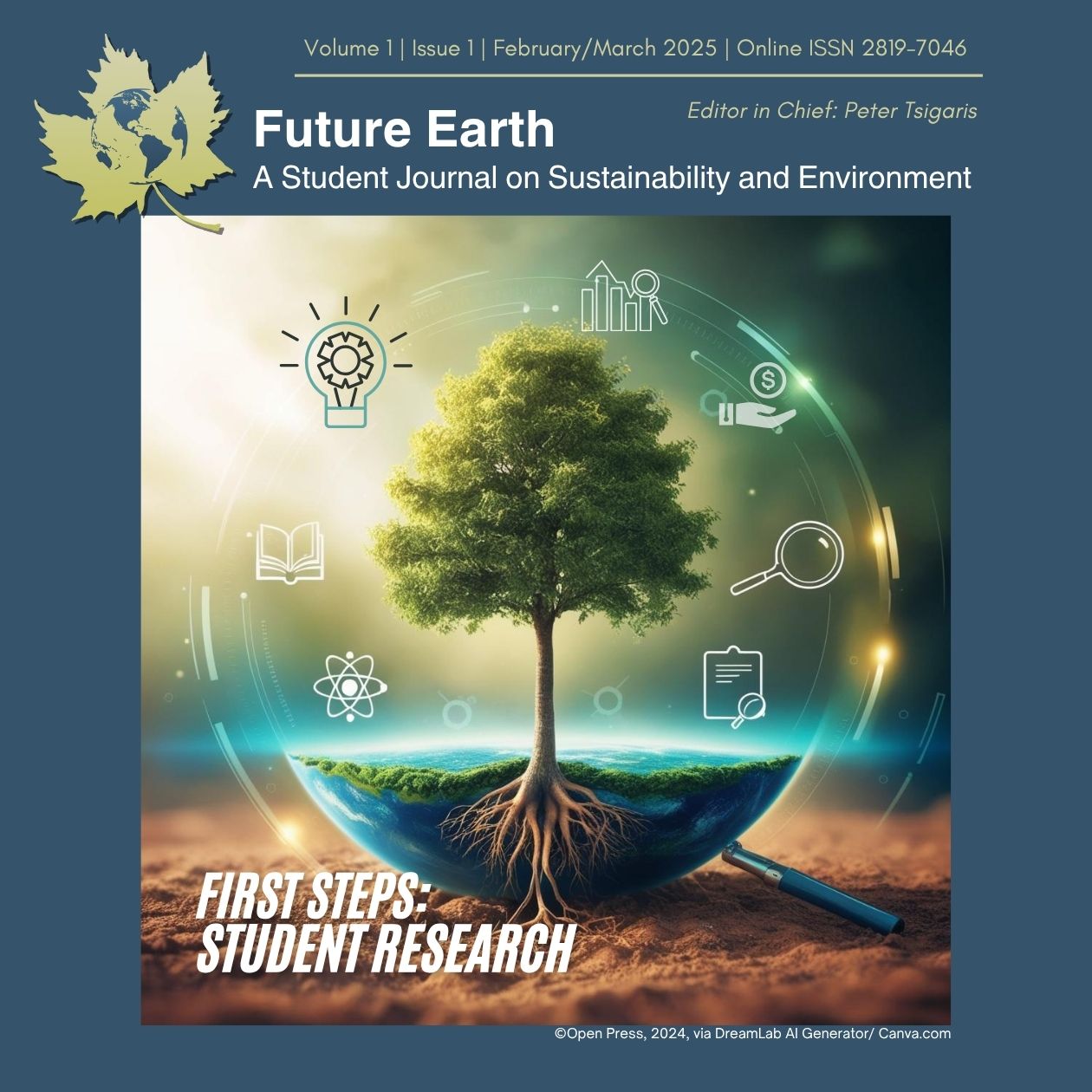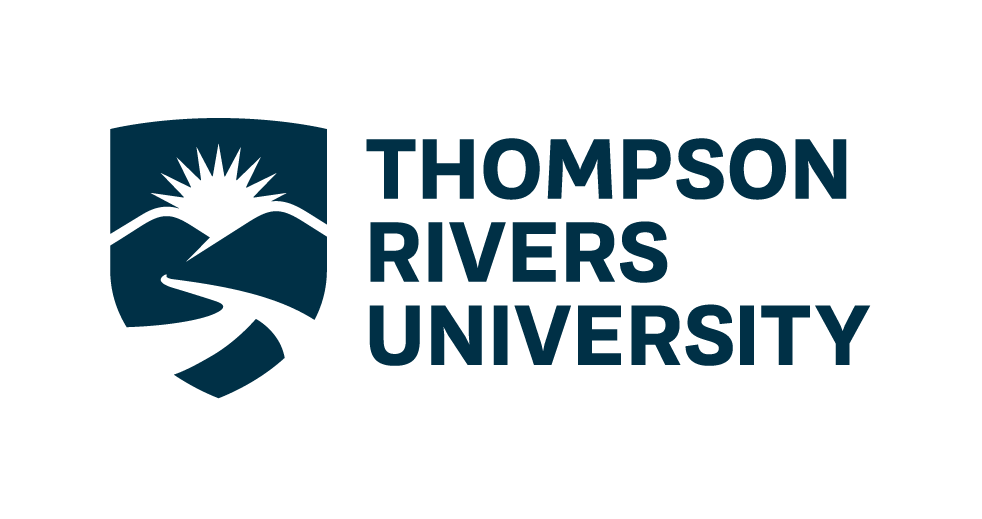Multidimensional Valuation of Trees at Thompson Rivers University: An Ecological, Cultural, and Socio-Economic Exploration
DOI:
https://doi.org/10.29173/bcelnfe661Keywords:
air pollution removal, biodiversity, campus sustainability, carbon sequestration, carbon storage, ecosystem services, green infrastructure, stormwater management, sustainability planning, tree valuation, urban forestAbstract
This study investigates the ecosystem services provided by the 1,806 trees on the TRU campus, focusing on their economic, environmental, and social contributions. Through established methodologies, the research quantifies key ecosystem services, including carbon storage and sequestration, stormwater management, energy savings, and aesthetic benefits using benchmarked valuation techniques. Using field data, the total appraisal value of the campus trees was determined to be ~ $34.3 million CAD, with an annual ecosystem service yield at the minimum of ~ $343,000 CAD. The analysis revealed carbon storage values ranging from 361 to 542 tons, contributing $61,404 to $92,106 CAD, and annual carbon sequestration of 5.4 to 54 tons, valued at $910 to $9,211 CAD. The total air pollution removed by campus trees was estimated to be 64 kg/year, corresponding to an economic value of approximately $4,620 CAD/year. Stormwater interception was calculated at 3,066 m³ annually, yielding cost savings of $7,970 CAD by reducing the burden on stormwater infrastructure. Energy savings, derived from reduced heating and cooling demand, added $15,942 CAD annually, while aesthetic contributions, measured through hedonic pricing, amounted to $76,297 CAD per year. While the primary focus is on quantifiable benefits, the research acknowledges the broader role of the forest in enhancing biodiversity, supporting cultural values, and fostering mental well-being.
This research provides a framework for understanding the value of urban forests in academic settings and highlights the need for proactive policies to sustain and enhance these benefits. The findings serve as a resource for decision-makers and contribute to the growing body of knowledge on integrating green infrastructure into campus planning and sustainability initiatives.
References
Arbab, N., Grabosky, J., & Leopold, R. (2022). Economic assessment of urban ash tree management options in New Jersey. Sustainability, 14(4), 2172. https://doi.org/10.3390/su14042172
Asanok, L., Kamyo, T., Norsaengsri, M., Yotapakdee, T., & Navakam, S. (2021). Assessment of the diversity of large tree species in rapidly urbanizing areas along the Chao Phraya River Rim, central Thailand. Sustainability, 13(18), 10342. https://doi.org/10.3390/su131810342
Atreya, K., Subedi, B., Ghimire, P., Khanal, S., Charmakar, S., & Adhikari, R. (2021). Agroforestry for mountain development: Prospects, challenges and ways forward in Nepal. Archives of Agriculture and Environmental Science, 6(1), 87-99. https://doi.org/10.26832/24566632.2021.0601012
Calfapietra, C., Fares, S., Manes, F., Morani, A., Sgrigna, G., & Loreto, F. (2013). Role of biogenic volatile organic compounds (BVOCs) emitted by urban trees on ozone concentration in cities: A review. Environmental Pollution, 183, 71–80. https://doi.org/10.1016/j.envpol.2013.03.012
Costanza, R., d’Arge, R., de Groot, R., Farber, S., Grasso, M., Hannon, B., Limburg, K., Naeem, S., O'Neill, R. V., Paruelo, J., Raskin, R. G., Sutton, P., & van den Belt, M. (1997). The value of the world's ecosystem services and natural capital. Nature, 387(6630), 253–260. https://doi.org/10.1038/387253a0
Costanza, R., de Groot, R., Sutton, P., van der Ploeg, S., Anderson, S. J., Kubiszewski, I., Farber, S., & Turner, R. K. (2014). Changes in the global value of ecosystem services. Global Environmental Change, 26, 152–158. https://doi.org/10.1016/j.gloenvcha.2014.04.002
Dirr, M. A. (2009). Manual of woody landscape plants: Their identification, ornamental characteristics, culture, propagation and uses (6th ed.). Stipes Publishing.
Dunn-Johnston, K., Kreuzwieser, J., Hirabayashi, S., Plant, L., Rennenberg, H., & Schmidt, S. (2016). Isoprene emission factors for subtropical street trees for regional air quality modeling. Journal of Environmental Quality, 45(1), 234-243. https://doi.org/10.2134/jeq2015.01.0051
Elmendorf, W. (2008). The importance of trees and nature in community: A review of the relative literature. Arboriculture & Urban Forestry, 34(3), 152-156.
Gill, A. M., Stephens, S. L., & Cary, G. J. (2013). The worldwide “wildfire” problem. Ecological Applications, 23(2), 438–454. https://doi.org/10.1890/10-2213.1
Hauer, R. J., Vogt, J., & Fischer, B. C. (2015). The costs of maintaining and not maintaining the urban forest: A review of the urban forestry and arboriculture literature. Arboriculture & Urban Forestry, 41(6), 293–323.
Helletsgruber, C., Gillner, S., Gulyás, Á., Junker, R., Tanács, E., & Hof, A. (2020). Identifying tree traits for cooling urban heat islands—A cross-city empirical analysis. Forests, 11(10), 1064. https://doi.org/10.3390/f11101064
Isaifan, R., & Baldauf, R. (2020). Estimating economic and environmental benefits of urban trees in desert regions. Frontiers in Ecology and Evolution, 8. https://doi.org/10.3389/fevo.2020.00016
Johnston, R. J., Rolfe, J., Rosenberger, R. S., & Brouwer, R. (Eds.). (2015). Benefit transfer of environmental and resource values: A guide for researchers and practitioners. Springer. https://doi.org/10.1007/978-94-017-9930-0
Kalaba, F. (2014). A conceptual framework for understanding forest socio-ecological systems. Biodiversity and Conservation, 23(14), 3391-3403. https://doi.org/10.1007/s10531-014-0792-5
Kenerson Group. (n.d.). Understanding tree appraisal values [PDF]. https://www.kenersongroup.com/knowledgebase/Understanding%20tree%20appraisal%20values.pdf
Livesley, S., Escobedo, F., & Morgenroth, J. (2016). The biodiversity of urban and peri-urban forests and the diverse ecosystem services they provide as socio-ecological systems. Forests, 7(12), 291. https://doi.org/10.3390/f7120291
Malkamäki, A. (2018). A systematic review of the socio-economic impacts of large-scale tree plantations worldwide. Global Environmental Change, 53, 90-103. https://doi.org/10.1016/j.gloenvcha.2018.09.001
McPherson, E. G., & Peper, P. J. (1995). Infrastructure repair costs associated with street trees in 15 cities. Arboricultural Journal, 19(4), 275–290. https://doi.org/10.1080/03071375.1995.9747069
McPherson, E. G., Simpson, J. R., Peper, P. J., Maco, S. E., & Xiao, Q. (2005). Municipal forest benefits and costs in five US cities. Journal of Forestry, 103(8), 411–416. https://doi.org/10.1093/jof/103.8.411
Millward, A. A., & Sabir, S. (2011). Benefits of a forested urban park: What is the value of Allan Gardens to the city of Toronto, Canada? Landscape and Urban Planning, 100(3), 177–188. https://doi.org/10.1016/j.landurbplan.2010.11.013
Nesbitt, L., Hotte, N., Barron, S., Cowan, J., & Sheppard, S. R. J. (2017). The social and economic value of cultural ecosystem services provided by urban forests in North America: A review and suggestions for future research. Urban Forestry & Urban Greening, 25, 103-111. https://doi.org/10.1016/j.ufug.2017.05.005
Nowak, D. J., Crane, D. E., & Stevens, J. C. (2006). Air pollution removal by urban trees and shrubs in the United States. Urban Forestry & Urban Greening, 4(3-4), 115-123. https://doi.org/10.1016/j.ufug.2006.01.007
Peacock, J., Ting, J., & Bacon, K. (2018). Economic value of trees in the estate of the Harewood House stately home in the United Kingdom. Peerj, 6, e5411. https://doi.org/10.7717/peerj.5411
Pearce, D. W., Atkinson, G., & Mourato, S. (Eds.). (2006). Cost–benefit analysis and the environment: Recent developments. OECD Publishing.
Song, X. P., & Tan, P. Y., & Edwards, P., & Richards, D. (2018). The economic benefits and costs of trees in urban forest stewardship: A systematic review. Urban Forestry & Urban Greening, 29. 162–170. https://doi.org/10.1016/j.ufug.2017.11.017
Tsvuura, S., Mudhara, M., & Mabhaudhi, T. (2023). An analysis of the perceived societal benefits of and threats from trees for the delivery of livelihoods and community development. Plants People Planet, 5(3), 424-436. https://doi.org/10.1002/ppp3.10364
Turner‐Skoff, J., & Cavender, N. (2019). The benefits of trees for livable and sustainable communities. Plants People Planet, 1(4), 323-335. https://doi.org/10.1002/ppp3.39
Widney, S., Fischer, B., & Vogt, J. (2016). Tree mortality undercuts ability of tree-planting programs to provide benefits: Results of a three-city study. Forests, 7(12), 65. https://doi.org/10.3390/f7030065
Wolf, K., Lam, S., McKeen, J., Richardson, G., Bosch, M., & Bardekjian, A. (2020). Urban trees and human health: A scoping review. International Journal of Environmental Research and Public Health, 17(12), 4371. https://doi.org/10.3390/ijerph17124371
Xiao, Q., McPherson, E. G., Simpson, J. R., & Ustin, S. L. (2000). Winter rainfall interception by two mature open-grown trees in Davis, California. Hydrological Processes, 14(4), 763–784.
Downloads
Published
How to Cite
Issue
Section
Categories
License
Copyright (c) 2025 Future Earth: A Student Journal on Sustainability and Environment

This work is licensed under a Creative Commons Attribution-NonCommercial-ShareAlike 4.0 International License.
Authors retain copyright and grant the journal the right of first publication, with the work licensed under a Creative Commons Attribution-NonCommercial-ShareAlike (CC BY-NC-SA) License. This license allows others to share and adapt the work, provided proper attribution is given to the original author and the work's initial publication in this journal, and that it is used for non-commercial purposes under the same terms. Authors may also enter into separate, additional agreements for the non-exclusive distribution of the journal's published version of the work (e.g., posting it to an institutional repository or including it in a book), with proper acknowledgement of its original publication in this journal.
Authors are encouraged to post their work online (e.g., in institutional repositories or on their personal websites) both prior to and during the submission process, as this can foster productive exchanges and increase the visibility and citation of their work (See The Effect of Open Access).



